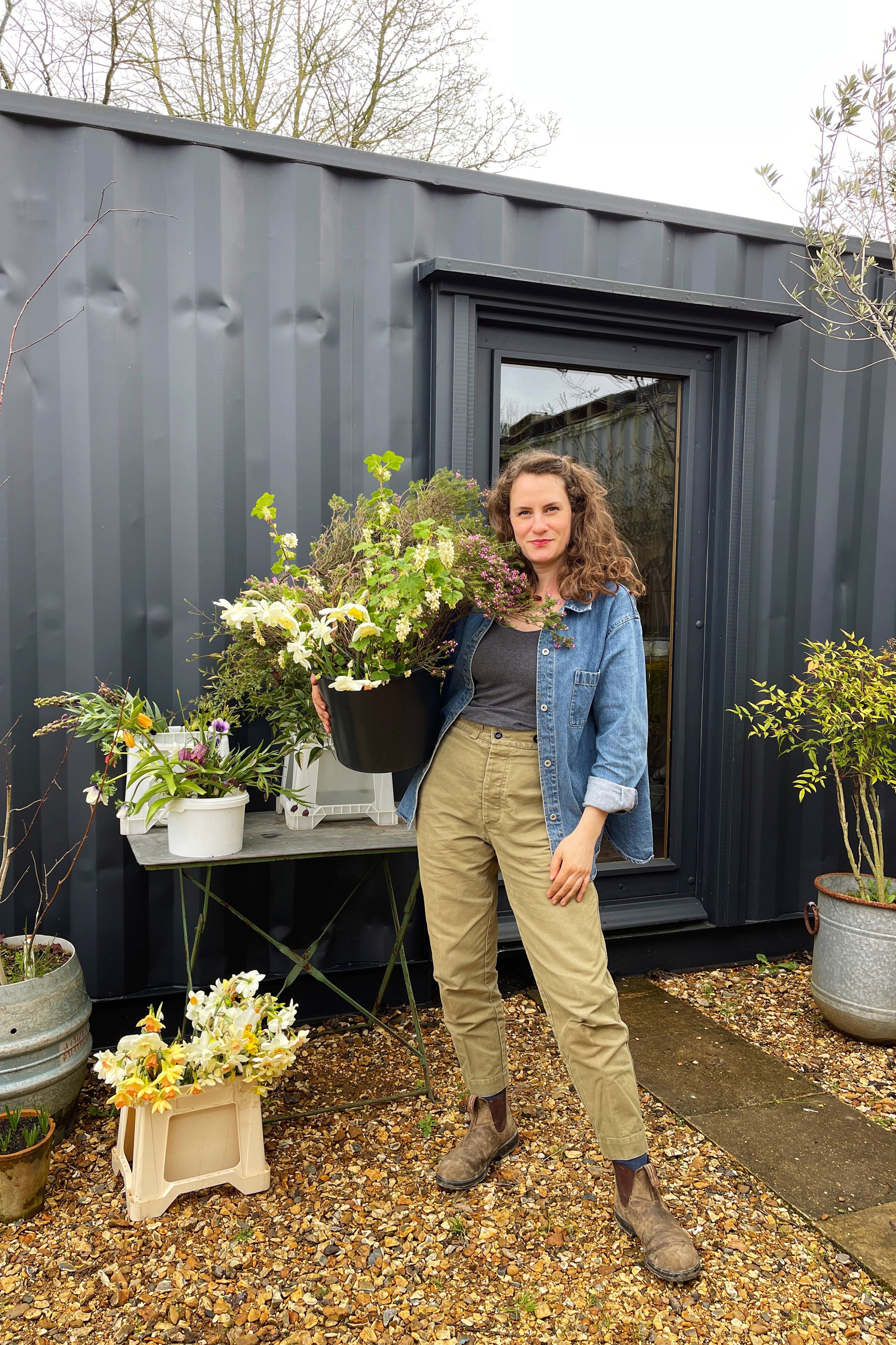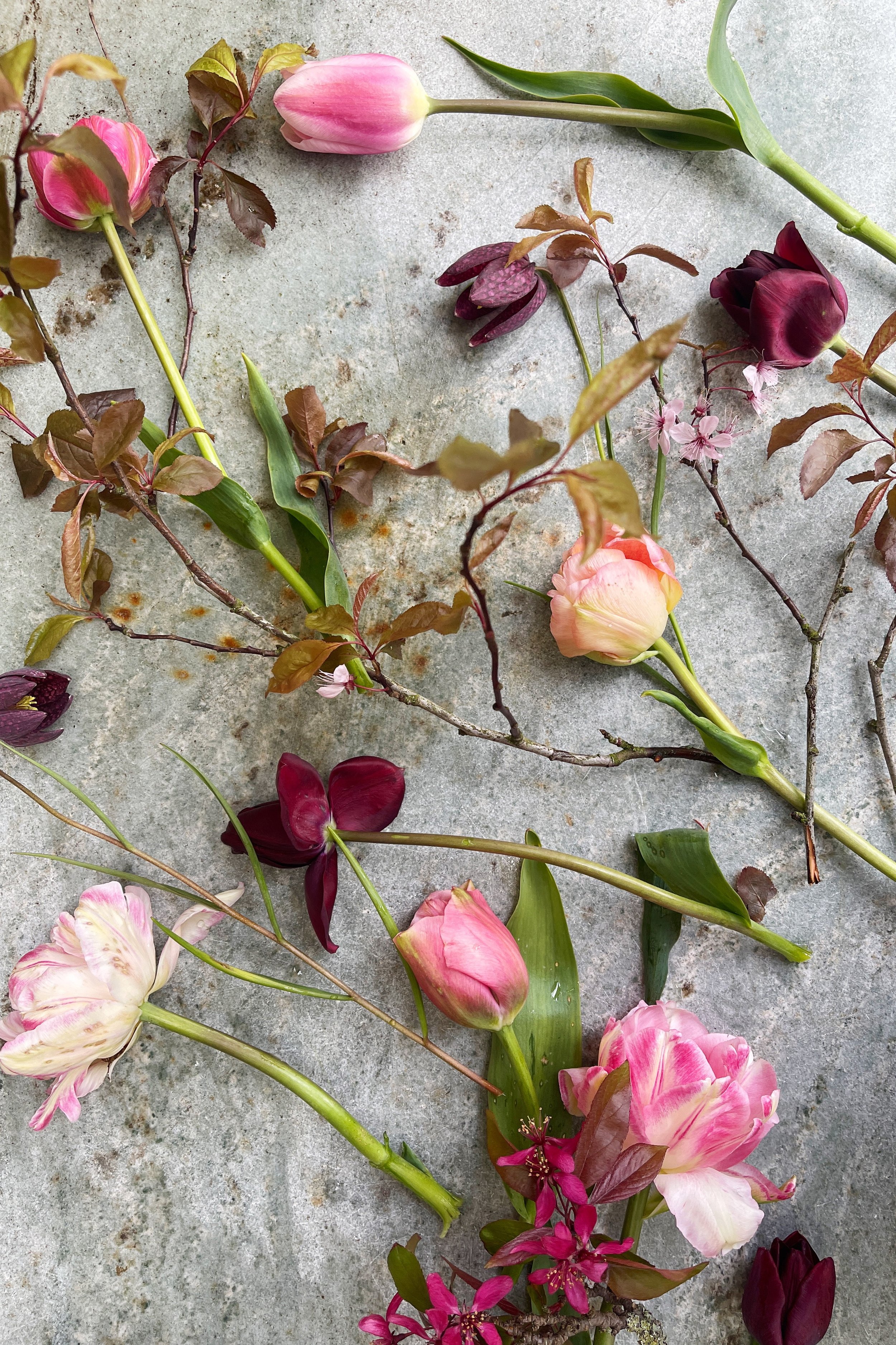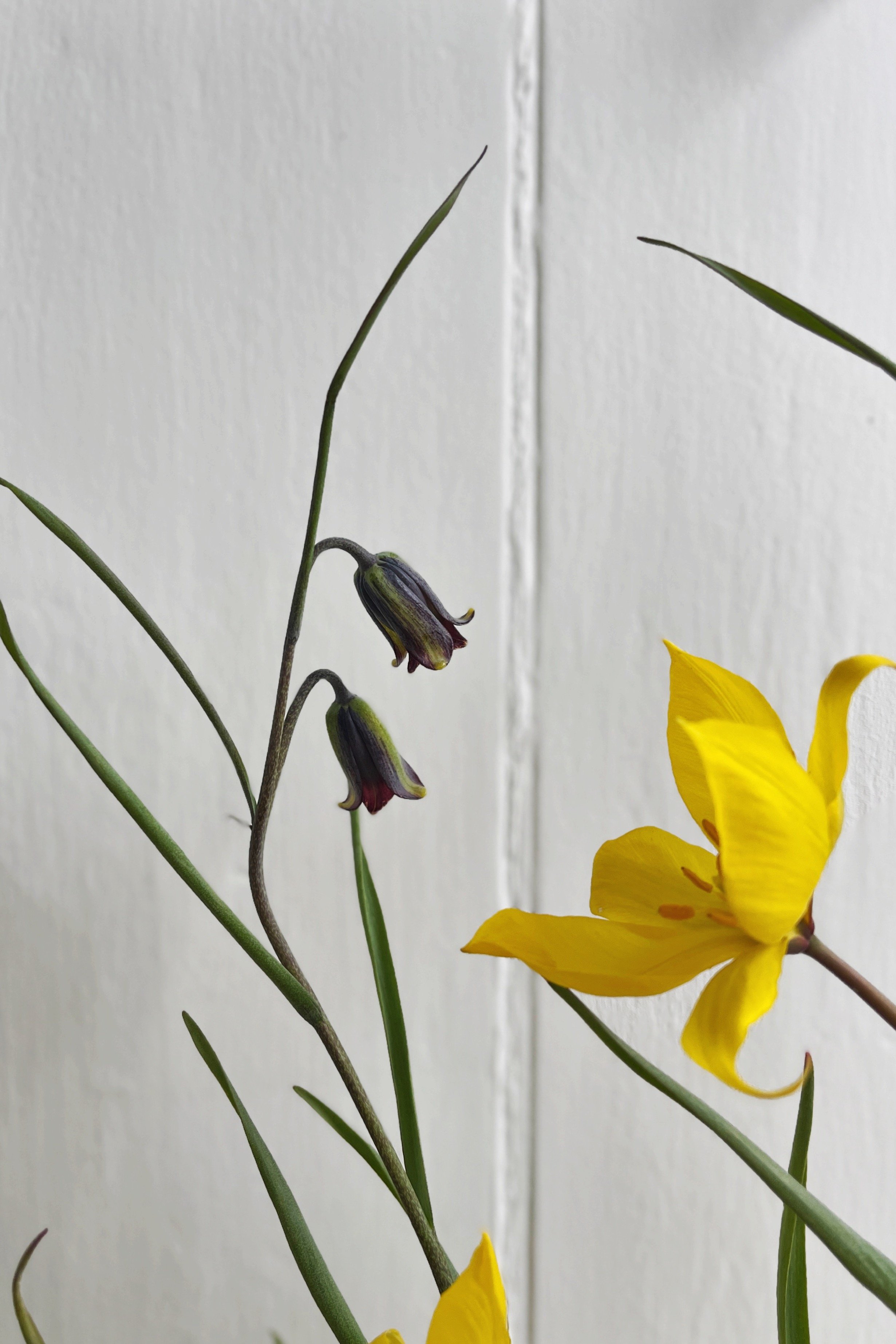The April dance
The growing season starts like a slow dance. A glide. The seasonal equivalent of a waltz, or perhaps a foxtrot.
At the cutting garden we take delivery of a whole host of new plants and give them a home in the moist, cool soil.
Some to replace winter losses, others that are entirely new to us and we’ll have to wait a few weeks yet to see in flower.
In April there are a lot of damp, drizzly days planting, weeding and mulching.
The garden has never looked better. It is starting to feel well established now and the shrubs are filling out beautifully.
From tunnel 2 we cut Narcissi and Anemone. The Ranunculus and Allium are just beginning; we’ll begin harvesting them next week.
In the outdoor dahlia beds the tulips are flowering alongside more Narcissi, primroses and pansies, Epimedium, Ipheion, Muscari, hellebores and some incredible Fritillaria - persica, meleagris, acmopetala, imperialis, elwesii and michaeilovskii.
It's the best feeling after the long winter to work with the sun on your back and to be able to generously fill buckets with colourful flowers to send to London.
In the studio we get back in the saddle and flex our design muscles ahead of the season, experimenting with form, colour and texture for various projects ahead. One of our key preoccupations this year is really reflecting how the garden looks and feels, trying to capture its energy and the way it changes - day by day, week by week, month by month. It is much more subtle than the four-season model would suggest and the spaces between the seasons seem to have a character of their own.
Using the abundance of flowers suddenly available for cutting we start working on an exciting new series of online classes. It feels great to dive in at the deep end on a new project; we love this work and the particular process of researching and planning, shooting, recipe testing, writing and editing.
Above is a favourite spring colour palette. Mixing bronze with varying shades of pink and plum.
The Malus ‘Prairie Fire’ explodes into a riot of blossom outside my bedroom window; the leaves are a beautiful rich, reddy-brown and the flowers lightly scented.
Forsythia with Tulipa sylvestris, the wild tulip.
Accompanied by Fritillaria elwesii, Fritillaria michailovskyi, Narcissus ‘Blushing Lady’, Oxalis (creeping woodsorrel) and fans of dried grasses.
I love the soft, icy blues in the garden at this time of the year - the Muscari (grape hyacinth) and Ipheion (spring starflower). And all the graceful stems of Anemone and Fritillaria. The tiny Epimedium flowers.
It’s a magical, subtle time as things just start to get going.
A study in white.
Exochorda x macrantha ‘The Bride’ (pearl bush), Anemone coronaria ‘The Bride’, Fritillaria meleagris ‘Alba’, Leucojum aestivum ‘Gravetye Giant’ (snowflake) and Thlaspi arvense (pennycress).
An Easter tablescape with a mix of vessels and materials:
Narcissi, Fritillaria, Spiraea, Anemone and Prunus.
Easter was spent in Wales among the daffodils and dripping branches.
So many extraordinary wild flowers in the woods and meadows - coralroot bittercress, aconites, wild strawberries, forget-me-nots and primroses.
Whilst in Wales I took the opportunity to visit one of my favourite local gardens one afternoon between April showers. Aberglasney is in the Tywi Valley in Carmarthenshire and well worth a visit if you are ever in the area. It’s an exquisite garden - or series of gardens - in the grounds of a vanilla-coloured mansion.
There is a lot to see, I had to do three ‘laps’ just to take it all in.
The gardens have distinctly different sections that lead into one another down the hill, starting from an Asiatic area at the top with paths through Magnolia, Rhododendron, Camellia and Azalea shrubs native to Japan, Nepal, Tibet and China. The ‘Alpinum’ is home to low-level dwarf varieties and at this time of the year is like a soft, pastel watercolour of Primula, Muscari, Pulsatilla and Saxifraga.
There are several walled gardens including the productive kitchen garden, which is beautiful later in the summer with step-over fruit trees, vegetables, herbs and cutting flowers, then an enchanting sea of Fritillaria meleagris in the lawned slope leading down towards the woodland and stream gardens. The ‘Ninfarium’, which houses a lush, sub-tropical garden in among the ruins of the original medieval building is named after the gardens of Ninfa outside Rome, created by the Caetani family, who once gave financial support to Wales’ most celebrated poet, Dylan Thomas.
The days continue to lengthen.
A few more and we're into May. One of the best months for flowers, arguably the best of them all…
If you haven’t already please do check out our YouTube channel where we are now posting regularly.
In addition to our monthly vlog from the studio and garden we are very much enjoying capturing and curating short, thoughtful films to share with you all and we’re so grateful for all the kind comments we’ve received recently. Topics include flower arranging, cut flower growing, seasonal studio tours and visits to our favourite gardens in search of inspiration. We hope you enjoy them.
Till next time.
X








































